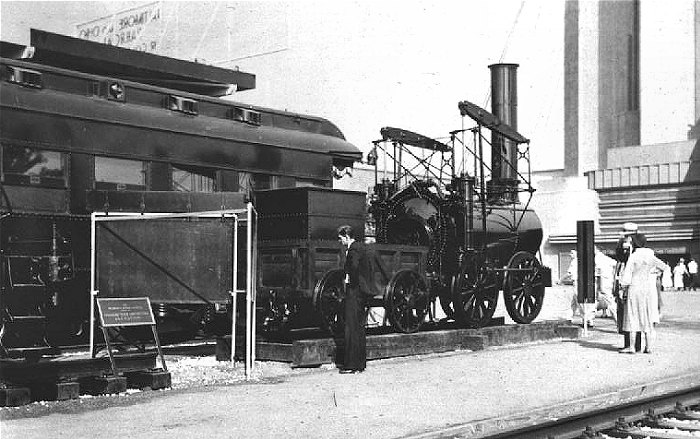In this photo we see the young Cecil Wickham examining a replica of the famous Stourbridge Lion, the first steam locomotive to run on a commercial railroad in the United States. Built by Foster, Rastrick and Company of Stourbridge, England, the locomotive (later dubbed the Lion) was purchased by The Delaware & Hudson Canal Company to run on its new railway line between Honesdale and Seely's Mills, Pennsylvania. Strangely, it made only one brief round trip on August 8, 1829, hauling a coal wagon as a tender, with young engineer Horatio Allen at the throttle. It was then immediately withdrawn from service. The locomotive had been ordered at three tons but was delivered at almost seven tons, too heavy for the strap-iron track that had been laid on the line which was more suitable for lighter, horse-drawn cars.
The abortive maiden run of the Stourbridge Lion was nevertheless considered a triumph, for it proved that steam power was a feasible means of transporting goods and presaged the greater success of later locomotives. At the time, however, no one realized the locomotive's historic significance. Its boiler was reused as a stationary power source and the locomotive was gradually stripped of its parts. What remains of it is now in the Smithsonian Institution.
In preparation for the Century of Progress Exposition, The Delaware & Hudson Railroad built a replica of the Stourbridge Lion in its Colonie, New York, shops. After research to determine the most authentic reproduction, all iron parts were hand-forged and the same care was applied to the rest of the locomotive. The replica was an anthracite-fueled operating model. The Delaware & Hudson produced a brochure describing the locomotive that can be viewed on George Elwood's Fallen Flags site.
